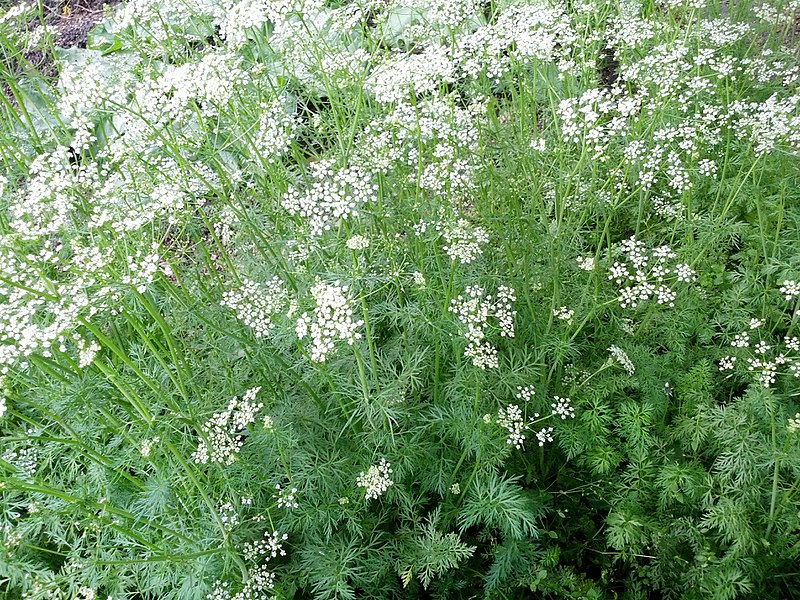
Cumin Seed
Cumin (Cuminum cyminum) has been in use for thousands of years. The Egyptians used it as both a culinary spice and to preserve mummies. It is mentioned in the Bible. The Romans used it to flavor their food. And, of course, it is used extensively in both Indian and Mexican cuisines.
Cumin is used medicinally in Ayurvedic medicine both internally and externally.
The plants produce umbelliferous flowers in midsummer that attract many kinds of beneficial insects such as lacewings, lady bugs, and parasitic wasps. Cumin makes excellent companion plants in your garden. Plant it next to plants that are plagued by aphids or caterpillars.
Cumin is an annual plant in the parsley family. It is native to the eastern Mediterranean and South Asian regions. It is also drought tolerant. Be sure to plant them in well-drained soil and full sun. The plants are quite small, only 10 to 20 inches tall.

Cumin Seedhead
Cumin is easily grown from seed. It can be direct sown in your garden after your last frost when air temperatures have reached a consistent 60⁰F. The plant has a long growing season of 120 days so northern gardeners prefer to start their seeds indoors to get a head start on the growing season to ensure that the seeds will be ready for harvest before the first frost.
Start your seeds indoors four weeks before your last frost. Soak them for 8 hours prior to sowing for best germination, then plant them ¼ inch deep. Keep them evenly moist but not wet and the temperature at 65⁰F. Germination should occur in 7 to 14 days.
Plant your seedlings in your garden after your last frost when the air temperatures have reached a consistent 60⁰F spacing them at least 4 inches apart. Give them a good watering when you plant them but thereafter, there is no need for supplemental watering. The plants are drought tolerant.
You can start harvesting the seeds when the seedhead is dried and has turned brown but before the seeds start to fall. Cut the entire seedhead whole from the plant and finish drying it in a paper bag with ventilation holes cut in it for good air circulation. When the pods are completely dried, gently rub them to release the seeds.
Your seeds will remain viable for up to two years after harvest.

